
Adorned with beautiful works of art, filled with light and music, and rich with history and lore, the Washington National Cathedral, the third-largest church building in the United States, is the culmination of a two-century-long plan for the construction of a majestic Gothic-style cathedral.
Designed by the landscape architect Fredrick Law Olmsted Jr, closely modeled on the English Gothic style of the late fourteenth century, it is located at Massachusetts and Wisconsin Avenues in the northwest quadrant of Washington, DC. Officially named the Cathedral Church of Saint Peter and Saint Paul in the City and Diocese of Washington, it is an American cathedral of the Episcopal Church, the seat of both the Presiding Bishop of the Episcopal Church and the Bishop of the Diocese of Washington.
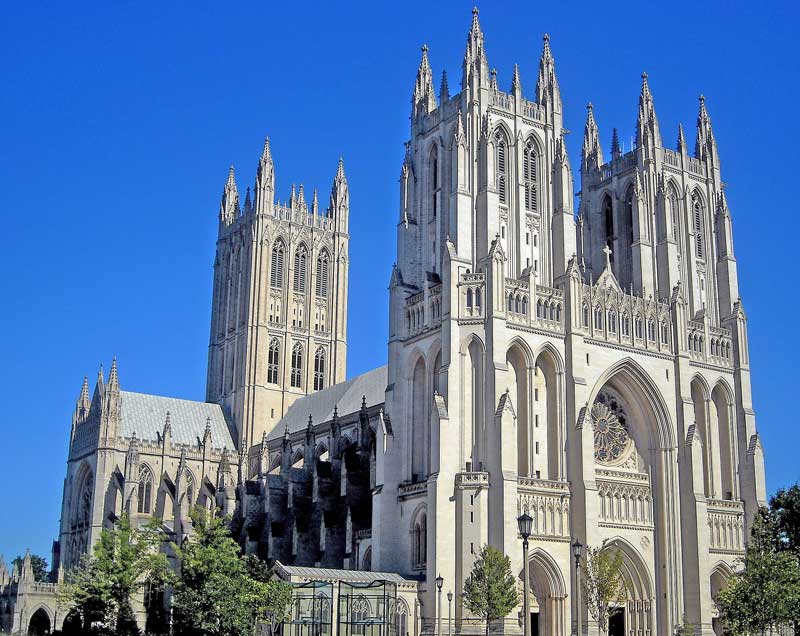
The idea of a national church goes back to 1791 when Pierre Charles L’Enfant in his plan for the federal city suggested the construction of a church for national purpose in the area which is now known as Gallery Place. However, the suggestion remained in the papers till 1891, when a century later, a meeting was held to make the necessary plans for creating an Episcopal cathedral in the capital city. Finally, the ball started to roll on 6 January 1893 when the Protestant Episcopal Cathedral Foundation of the District of Columbia was granted a charter from Congress to establish the cathedral, basically for the promotion of religion, education, and charity.
Later, President Benjamin Harrison signed the charter into law, and after rejecting several sites, the 30-acre commanding site of Mount Saint Alban was bought for the construction of the cathedral. Henry Yates Satterlee, the first Episcopal Bishop, decided to engage George Fredrick Bodley, a leading Anglican Church architect of England, as the head architect, while Henry Vaughan was selected as supervising architect. Construction of the building started on the east side of the site on 29 September 1907 when President Theodore Roosevelt laid the cornerstone, after his ceremonial address.
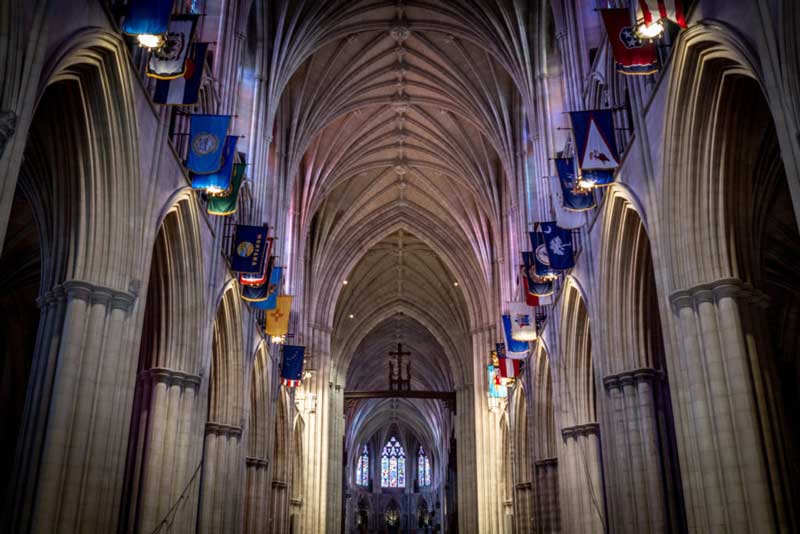
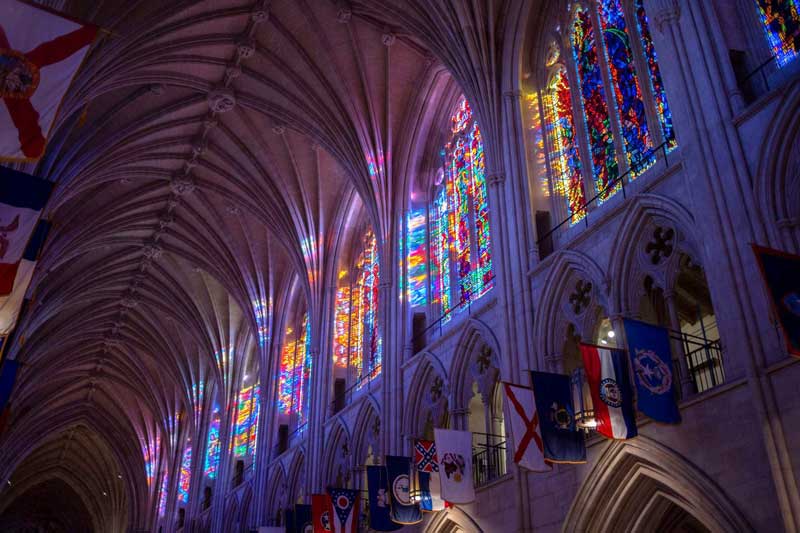
Bethlehem Chapel, the first part of the cathedral, built on the top of the foundation stone, was opened services in the unfinished cathedral in 1912, and have continued daily ever since. The chapel was dedicated to Bishop Satterlee, who passed away in 1908. An alabaster sarcophagus containing his remains is kept behind the altar.
The progress of construction was temporarily suspended for a short period during World War I, and when the work resumed, both Bodley and Vaughan had died. During that time, American architect Philip Hubert Frohman, designated the principal architect, took over the design of the cathedral. However, the construction of the building was completed only in 1990, after 83 years from the inception of the project, as the work was slowed down during the periods of economic hardship and stopped altogether from 1977 to 1980. However, despite the placement of the final finial atop the southwest tower in the presence of President George H W Bush in 1990, decorative works like carving and statuary were not completed till the beginning of the second decade of the next century.
Strangely, despite being named as a national cathedral, it was built with private funds, and even today, its operation is funded by donations, gifts, and revenue from its souvenir shops.

Built in the shape of a cross, Washington National Cathedral consists of a 530 feet (160 m) long, narrow mass, with an eight-bay nave and the five-bay chancel intersected by a six-bay transept. While the pulpit was carved out of stones from Canterbury Cathedral, the high altar, known as the Jerusalem Altar, was made from stones quarried at Solomon’s Quarry, near Jerusalem. The cathedral consists of nine chapels and contains two sets of bells, a 53-bell carillon and a 10-bell peal for change ringing in the central tower, hundreds of stained-glass windows, thousands of needlepoint work, the largest pipe organ in the area, and countless stone carvings. It has two hundred stained glass windows. One of them, the space window, depicts mankind’s landing on the Moon, which included a fragment of lunar rock at its centre. While most of its interior decorative items have Christian symbolism, in reference to the Episcopal roots of the church, it also houses statues of persons of national significance like the statues of George Washington and Abraham Lincoln. The exterior of the building is decorated with numerous grotesques and gargoyles, mostly designed by the carvers. The Gloria in Excelsis Tower rises above the crossing, 300 feet above grade. The Pilgrim Observation Gallery, located in the west-end towers, provides spectacular views of the city.
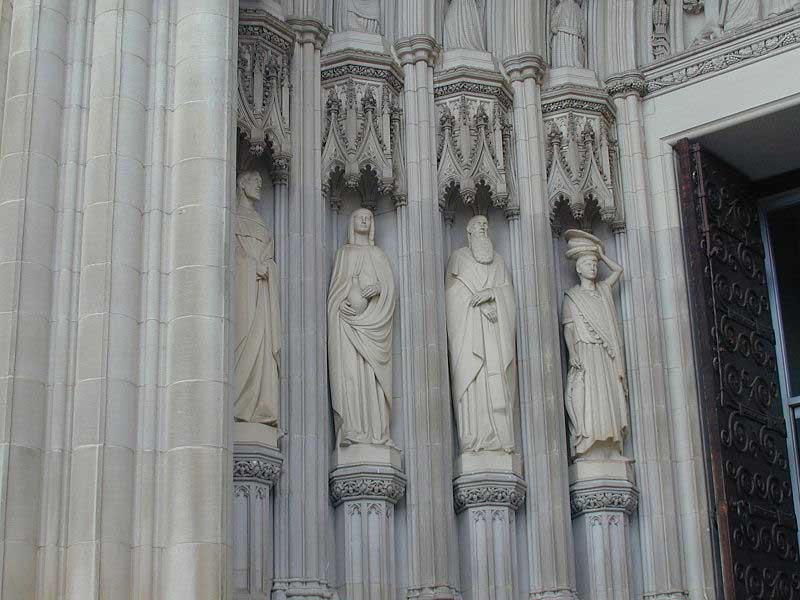
The Chapel of St Joseph of Arimathea contains a mural depicting the burial scene of Jesus, in presence of St Joseph. According to the story of crucifixion, St Joseph donated a tomb for Jesus, which he had bought for his own. Symbolizing the low point of Jesus’ life, the floor is slightly lower than the rest of the crypt level. The walls of the Resurrection Chapel, located across the corridor, are decorated with beautiful mosaic, designed by Rowan Le Compte, and his wife, Irene.
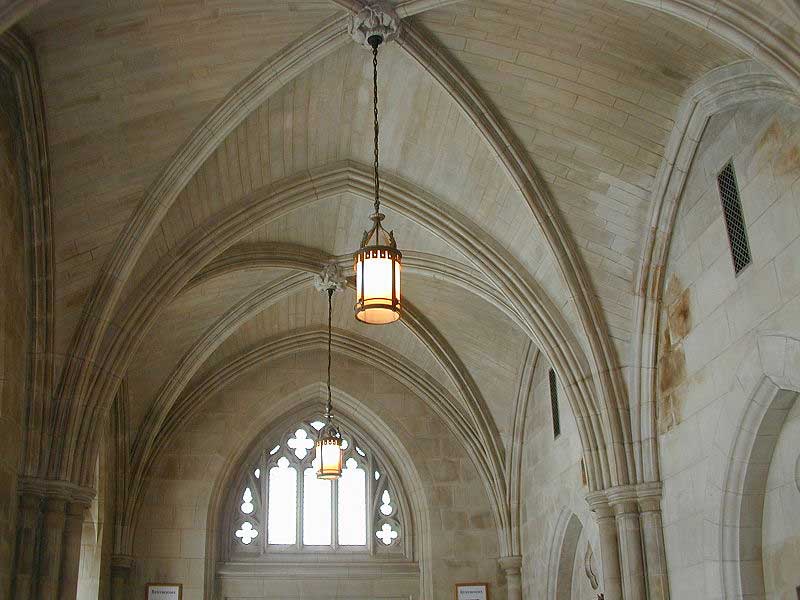
Washington National Cathedral was severely damaged by the Virginia Earthquake in 2011, when several pinnacles twisted out of alignment or collapsed, Finial stones on several pinnacles broke off, cracks appeared in the flying buttresses surrounding the apse, and a hole was punched through the metal-clad roof by falling masonry. Although the process of repairing is in progress, it may take another decade to complete the job.